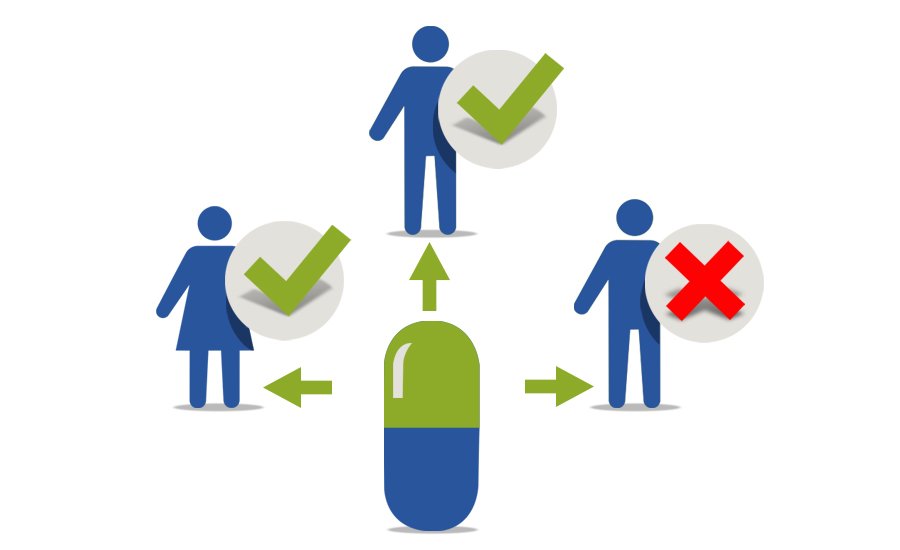Statistics in Precision Medicine
Biomarkers are the essence of precision medicine. There are particular statistical methodologies involved in evaluating biomarkers on their analytical performance and clinical utilities.
Graphic illustration of the impact of prognostic and predictive biomarkers on treatment effects.
Prognostic vs. Predictive Biomarkers
The concepts and statistical tests to determine prognostic and predictive biomarkers, as well as their applications in a clinical trial design.
Graphic illustration of the concept of a companion diagnostic.
Companion Diagnostics (CDx)
In the paradigm of co-development of a therapeutic product and its IVD CDx, due to the nature of a drug and its CDx often developed by different companies in different phases, a lag may occur when a market-ready CDx test is unavailable for the pivotal trial of a drug to be utilized for enrollment, which may eventually impact on the drug approval due to lack of a cleared CDx. In order to avoid a delay in the approvals, an IVD bridging study design would be needed, which allows a clinical trial assay (CTA, a prototype of CDx) in use to enroll patients, while a proposed CDx assay is undergoing analytical validation. In addition, it’s via demonstrating similar performance characteristics between CTA and CDx to bridge the clinical efficacy from the CTA based trial to CDx diagnostic results.
Graphic illustration of surrogate endpoints that are fully capturing the effect of interventions on clinical “hard” endpoints.
Pharmacodynamic (PD) & Surrogate Biomarker
Another 2 useful drug development tools (DDTs), and the concepts and criteria for a PD or a surrogate biomarker.



